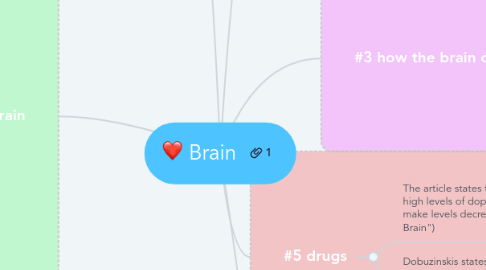Brain
by Caitlin Alderete

1. #6 disabilities
1.1. The newsela article declares that, "Approximately 6.4 million in the United States and one-tenth of children worldwide suffer from the condition. They struggle with paying attention and controlling their impulses" (Landhuis).
1.2. Lisa Krieger explains that, "autism is usually thought of as a serious developmental problem. People who are autistic often have trouble communicating with others and may have a tendency to do things over and over, or to focus on one interest to the exclusion of everything else" (Krieger).
2. #1 brain injuries
2.1. According to Fleischman, "Like Phineas, these patients with frontal lobe damage have trouble making decisions. Like Phineas with his $1,000 pebbles, they perform well on logic and math tests but make strange choices in trading situations. Their emotional responses are unpredictable. They seem out of step emotionally with the rest of the world" (Fleischmann 66).
2.2. Jim Vertuno notes that, "The CDC has estimated that up to 3.8 million concussions occur in sports and recreational activities each year. However, some experts wonder if those numbers underestimate total brain injuries. Some individuals may not seek treatment for mile or moderate symptoms" (Vertuno).
3. #4 music and the brain
3.1. The video notes, "In a study where no musician volunteers listened to four symphonies by William Boyce, an FMRI showed that they all had activity in the brain regions involved in movement, motor planning, attention, and, of course, the auditory cortex" (Fantano).
3.2. The article points out, "They then asked 15 people to create a customized play list with songs, lyrics or music that they knew well. After that, they took each individual and played him or her a list of songs, some off their play list, others, totally new. Ever so often, without any warning, they would hit the mute button. Observing the brain activity using an MRI scanner, they noticed an interesting phenomenon - whenever the subject knew the song or the words were easy enough to guess, the auditory cortex filled in the missing part so well, that the person did not realize that the music had stopped and continued humming" (Dolasia).
4. #3 how the brain can adapt
4.1. Mantha states, "The researchers believe that small, self-serving lies desensitize our brains to the negative emotions connected to dishonesty, paving the way for bigger lies" (Mantha).
4.2. The article says that, "'In a brain lacking glucose, it's harder to control signs of anger. Acute bouts of hunger trigger the release of stress hormones which makes it harder to manage our anger and irritability" (Ahmed).
5. #5 drugs
5.1. The article states that, "A normal brain has high levels of dopamine. Using drugs may make levels decrease" ("Mapping the Brain")
5.2. Dobuzinskis states, "Young, casual marijuana smokers experience potentially harmful changes to their brains, with the drug altering regions of the mind related to motivation and emotion, researchers have found" (Dobuzinskis).
6. #2 how the brain develops
6.1. Ahmed declares, "Whenever we make a decision, two critical areas of the brain are involved. The dorsolateral prefrontal cortex that plans for the future, and the striatum that evaluates the rewards of a decision. In teenagers, the connection between the two is still developing. Therefore the dorsolateral prefrontal cortex's influence on deciding which is the better option is somewhat limited" (Ahmed).
6.2. The article says that, "Infants are in near-constant motion, which is extremely important for development, she said. This movement 'strengthens their muscles and hones their neural circuits for smooth, purposeful motor skills'" (Deardorff).


